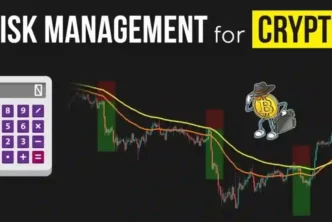Cryptocurrencies have become one of the most talked-about financial assets in the past decade, drawing interest from investors, technologists, and financial analysts alike. The rise of Bitcoin and Ethereum has paved the way for thousands of altcoins, some of which have generated astronomical returns for early investors. But how can you identify the next big cryptocurrency before it skyrockets? This article will explore the key factors and strategies you should consider when trying to find the next big cryptocurrency.
Understanding the Basics of Cryptocurrency
What is Cryptocurrency?
Cryptocurrency is a digital or virtual form of currency that uses cryptography for security. Unlike traditional fiat currencies, cryptocurrencies are decentralized and operate on a technology called blockchain. The most popular cryptocurrencies today include Bitcoin (BTC), Ethereum (ETH), and Binance Coin (BNB), but thousands of others exist with varying use cases and potential.
How Do Cryptocurrencies Work?
Cryptocurrencies function through decentralized networks, typically built on blockchain technology. Blockchain is a distributed ledger that records transactions across many computers, ensuring transparency and security. Unlike traditional currencies, cryptocurrencies aren’t controlled by central banks or governments, which gives them both advantages and disadvantages in terms of regulation, volatility, and investment opportunities.
Key Factors to Look for in the Next Big Cryptocurrency
Identifying the next big cryptocurrency requires thorough research and an understanding of several factors that contribute to the growth and success of a digital asset. Here are some of the most critical elements to consider:
1. The Technology Behind the Cryptocurrency
When evaluating a cryptocurrency, it’s important to look at the technology behind it. The blockchain platform supporting a cryptocurrency should offer scalability, security, and decentralization. A solid and innovative technology is often a strong indicator that the cryptocurrency has long-term potential.
- Blockchain Consensus Mechanism: One of the most important aspects of a cryptocurrency’s underlying technology is the consensus mechanism used by its blockchain. The two most common consensus mechanisms are Proof of Work (PoW) and Proof of Stake (PoS). PoW, used by Bitcoin, requires miners to solve complex mathematical puzzles, while PoS relies on validators who lock up their coins to validate transactions.
- Scalability: Scalability refers to the blockchain’s ability to handle more transactions as it grows. Ethereum, for example, initially struggled with scalability, but its transition to Ethereum 2.0 (PoS) aims to improve this. A cryptocurrency with a scalable blockchain is more likely to gain adoption over time.
- Security: Security is a top concern for any digital asset. Look for cryptocurrencies that have undergone rigorous security audits and have a track record of being secure from hacks or exploits.
2. The Use Case and Utility
A cryptocurrency’s value is often tied to its use case, or the real-world problem it seeks to solve. The next big cryptocurrency should offer more than just speculative value. It should have a clear and compelling use case that addresses a gap or inefficiency in existing systems.
- DeFi (Decentralized Finance): DeFi is a rapidly growing sector within the cryptocurrency space that aims to recreate traditional financial services (lending, borrowing, insurance) on decentralized platforms. Cryptocurrencies built for DeFi applications, such as Aave (AAVE) or Uniswap (UNI), offer innovative solutions to established financial systems.
- NFTs and Digital Art: Non-fungible tokens (NFTs) have exploded in popularity, creating new avenues for artists, musicians, and creators to monetize their work. Cryptocurrencies built to support NFT marketplaces or digital art ecosystems could be highly valuable.
- Blockchain Interoperability: Cryptocurrencies that focus on improving interoperability between different blockchains (such as Polkadot or Cosmos) can become essential for the future of the decentralized web. Interoperability enables different blockchains to communicate and work together, which is crucial as the ecosystem grows.
3. The Team Behind the Cryptocurrency
The team behind a cryptocurrency is one of the most significant indicators of its future success. Strong leadership with a proven track record in the tech, blockchain, or finance industries can give investors confidence in the cryptocurrency’s potential. Here’s what to look for:
- Founders: Investigate the founders and developers of the cryptocurrency. Are they reputable? Have they previously built successful blockchain projects? A team with experience and credibility is a good sign.
- Development Community: A vibrant and active development community is crucial for the long-term success of any cryptocurrency. Open-source projects with active GitHub repositories are a good sign of ongoing development and commitment.
- Advisors and Partnerships: Look for strategic partnerships with established companies, organizations, or governments. High-profile advisors can also add credibility to the project.
4. Community Support and Adoption
The cryptocurrency community plays a crucial role in the success of a digital asset. A strong, engaged, and active community can drive adoption, increase demand, and create momentum for a cryptocurrency.
- Community Engagement: Look at the social media channels, such as Reddit, Twitter, and Telegram, to see how active and engaged the community is. A passionate and vocal community is often a good indicator of interest and future success.
- Adoption and Partnerships: Assess whether the cryptocurrency is being adopted by businesses, investors, or governments. Real-world use cases and partnerships with major companies can boost a cryptocurrency’s credibility and value.
5. Market Capitalization and Liquidity
Market capitalization is one of the most widely used metrics to evaluate a cryptocurrency. It’s calculated by multiplying the current price of the cryptocurrency by its circulating supply. A larger market cap typically indicates a more established and stable project, but smaller market caps may offer greater upside potential.
- Market Cap vs. Potential: While a larger market cap may indicate stability, it can also limit growth potential. Cryptocurrencies with smaller market caps may be more volatile but could see significant growth if they gain traction.
- Liquidity: Liquidity refers to how easily a cryptocurrency can be bought or sold without affecting its price. Cryptocurrencies with higher liquidity are less likely to experience extreme price fluctuations, which makes them more attractive to institutional investors.
6. Regulatory Environment and Legal Considerations
The regulatory landscape for cryptocurrencies is constantly evolving. Governments and regulators around the world are working to establish clear guidelines for the use and trading of digital assets. Understanding the regulatory environment is crucial when evaluating a cryptocurrency’s potential.
- Regulatory Compliance: Cryptocurrencies that comply with local regulations are more likely to gain widespread adoption. Conversely, cryptocurrencies that face legal challenges or are banned in certain jurisdictions may struggle to achieve mainstream success.
- Global Adoption: Global adoption of cryptocurrencies depends on the ability to navigate regulatory hurdles in various countries. Look for cryptocurrencies that have plans in place to comply with international regulations.
7. Market Sentiment and Trends
Cryptocurrencies are highly affected by market sentiment, which can cause significant price fluctuations. While short-term price movements are often driven by speculation, long-term success is typically based on solid fundamentals.
- Bullish or Bearish Trends: Pay attention to market trends and sentiment. During a bullish market, cryptocurrencies with strong fundamentals are more likely to experience price surges. During a bearish market, it’s important to identify projects with staying power that can weather the storm.
- News and Events: Cryptocurrency prices are often affected by news events, such as regulatory announcements, technological upgrades, or partnerships. Keeping an eye on upcoming developments or announcements can provide insight into the potential for growth.
Conclusion
Identifying the next big cryptocurrency is a complex and nuanced process. It requires understanding the technology behind the cryptocurrency, its use case, the team driving it, and the market dynamics that could influence its growth. By carefully analyzing these factors, conducting thorough research, and staying updated on market trends, you can increase your chances of spotting the next cryptocurrency to take off.
Remember, cryptocurrency investments come with a high level of risk due to their volatility and uncertainty. Always conduct your own research, consider diversifying your portfolio, and never invest more than you can afford to lose. By staying informed and following the right strategies, you can improve your chances of identifying the next big cryptocurrency before it becomes mainstream.





